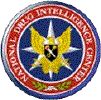Methamphetamine is a synthetic (man-made) stimulant that is highly
addictive. The drug is abused because it produces euphoric
effects--sometimes described as a sense of well-being--that can last
up to 24 hours. Methamphetamine is inexpensive and relatively easy to
produce--making it affordable and readily available to teenagers.
Because methamphetamine can be produced using many different
methods, its appearance can vary dramatically. The drug may be sold
either as a powder--sometimes crystalline--or as rock-like chunks. The
color of methamphetamine likewise varies: white, yellow, brown, gray,
orange, and pink all have been observed.
How is methamphetamine abused?
Methamphetamine can be injected, smoked, snorted, or ingested
orally. Injecting or smoking the drug produces an immediate and
intense rush. The euphoric effect that results from snorting or
ingesting the drug is not as intense and requires more time to take
effect--3 to 5 minutes for snorting and 15 to 20 minutes for oral
ingestion.
To Top
Who uses methamphetamine?
In the past the typical methamphetamine user was an
adult male with a lower than average income. However, now individuals
of all ages and economic status use methamphetamine. Data
reported in the National Household Survey on Drug Abuse indicate that
an estimated 9.6 million U.S. residents aged 12 and older used
methamphetamine at least once in their lifetime. The survey also
revealed that many teenagers and young adults use
methamphetamine--338,000 individuals aged 12 to 17 and 1.5 million
individuals aged 18 to 25 used the drug at least once.
Methamphetamine use among high school students is a
particular concern. Nearly 7 percent of high school seniors in the
United States used the drug at least once in their lifetime, and
nearly 2 percent used the drug in the past month, according to the
University of Michigan's Monitoring the Future Survey.
What are the risks?
Methamphetamine use is associated with many serious
physical problems. The drug can cause rapid heart rate, increased
blood pressure, and damage to the small blood vessels in the
brain--which can lead to stroke. Chronic use of the drug can result in
inflammation of the heart lining. Overdoses of methamphetamine can
cause hyperthermia (elevated body temperature), convulsions, and
death.
Individuals who abuse methamphetamine also may have
episodes of violent behavior, paranoia, anxiety, confusion, and
insomnia. Methamphetamine also can produce psychotic symptoms that
persist for months or years after an individual has stopped using the
drug.
Methamphetamine abusers who inject the drug expose
themselves to additional risks, including contracting human
immunodeficiency virus (HIV), hepatitis B and C, and other blood-borne
viruses. Chronic users who inject methamphetamine also risk scarred or
collapsed veins, infections of the heart lining and valves, abscesses,
pneumonia, tuberculosis, and liver and kidney disease.
The most common names for methamphetamine are crank,
meth, and speed. (Please see the Street Terms text box below for
additional names.)
Street Terms for Methamphetamine
|
Beannies
Brown
Chalk
Chicken feed
Cinnamon
Crink |
Crypto
Fast
Getgo
Methlies quik
Mexican
crack
|
Redneck cocaine
Rock
Tick tick
Wash
Yellow powder |
|
To Top
Is methamphetamine illegal?
Yes, methamphetamine is illegal. Methamphetamine is a
Schedule II substance under the Controlled Substances Act. Schedule II
drugs, which include cocaine and PCP, have a high potential for abuse.
Abuse of these drugs may lead to severe psychological or physical
dependence.
Other products of interest:
Check out Fast Facts on:
- Crack cocaine
- Crystal methamphetamine
- GHB and analogs
- Heroin
- Inhalants
- Jimsonweed
- Ketamine
|
- Khat
- LSD
- Marijuana
- MDMA
- PCP
- Powdered cocaine
- Prescription drugs
- Yaba
|
|
Also available from NDIC:
- Huffing--The Abuse of Inhalants
- Prescription Drug Abuse and Youth
- Drugs, Youth, and the Internet
For more information on illicit drugs check out our web site at:
www.usdoj.gov/ndic. Call 814-532-4541 to request NDIC products.
Our addresses:
National Drug Intelligence Center
319 Washington Street, 5th Floor
Johnstown , PA 15901-1622
Telephone: 814-532-4601
FAX: 814-532-4690
NDIC Washington Liaison Office
8201 Greensboro Drive, Suite 1001
McLean , VA 22102-3840
Telephone: 703-556-8970
FAX: 703-556-7807
NDIC publications are available on the following web sites:
ADNET http://ndicosa
LEO home.leo.gov/lesig/ndic
RISS ndic.riss.net
INTERNET www.usdoj.gov/ndic
To Top
|


